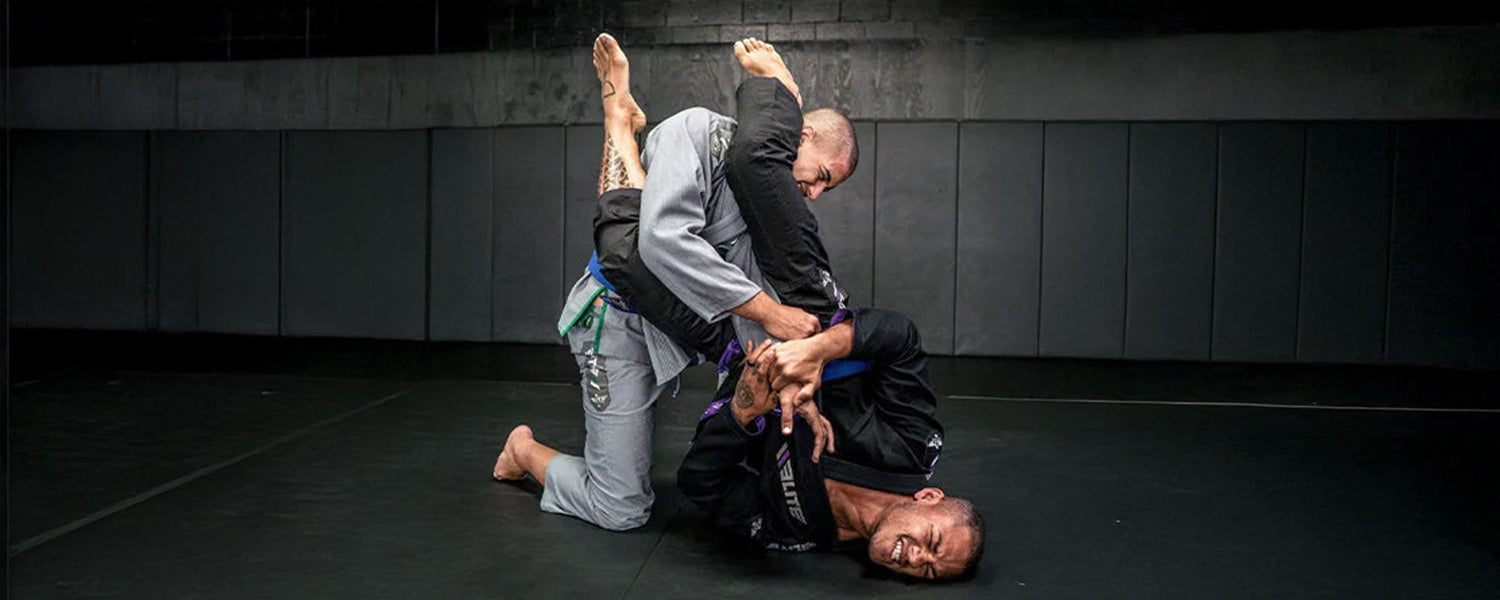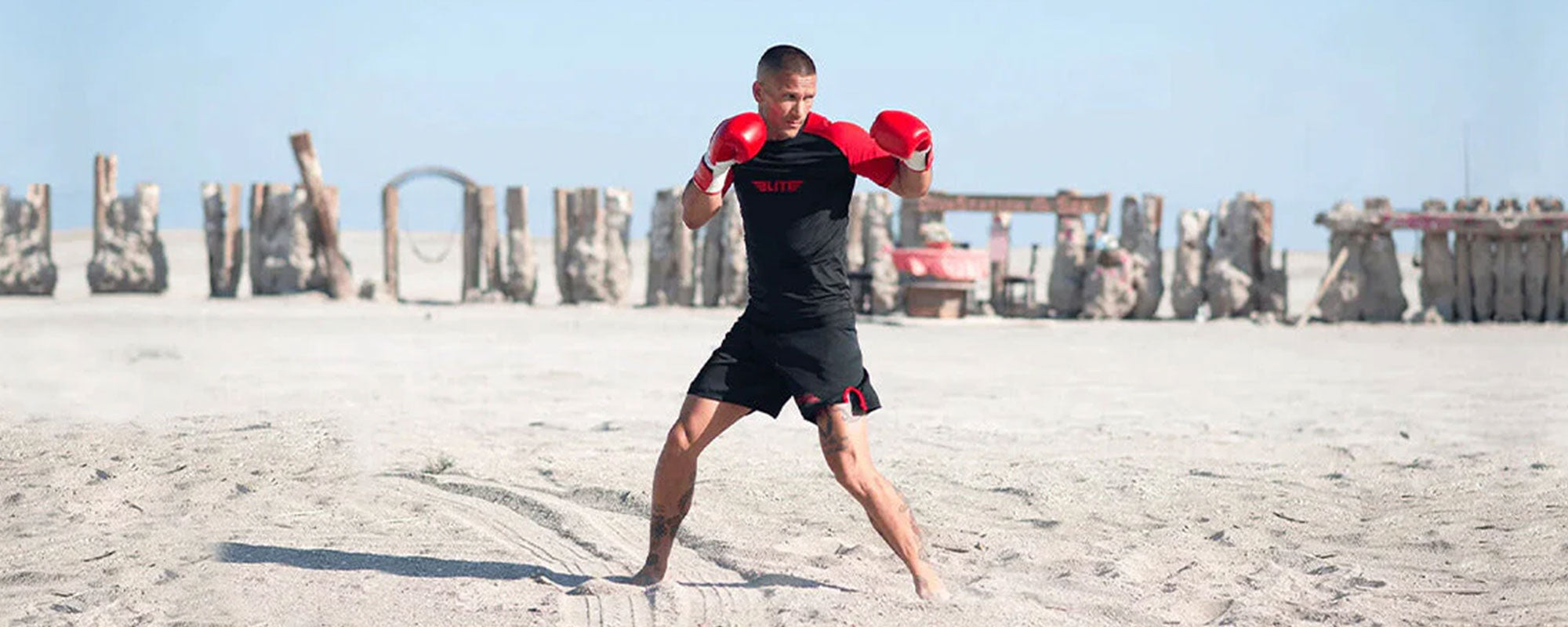Table of content
Brazilian jiu jitsu is a martial art developed to subdue opponents in self-defense and that means all opponents, regardless of their size, strength, style, etc.
Does this mean a BJJ athlete is invincible? Evidently not.
The best answer to this would be the history of BJJ as a martial art or taking the story of Royce Gracie, the legendary UFC champion.
Entering the UFC in 1993, Royce was the only BJJ athlete of his stature in the competition.
Needless to say, he faced opponents who specialized in boxing, wrestling, karate, taekwondo, and other various forms of martial arts.
Each of these opponents had peculiar attributes that set them leagues apart from Royce.
Not only were they taller, but they were also stronger, faster, hitting harder than anything Royce had ever faced, and were overwhelmingly experienced.
Against all odds, the Gracie stood victorious, having beaten the tallest and the strongest opponents in the competition.
How did he do it? How do BJJ athletes like Royce, Maeda, Helio, and many other legends defeat opponents twice their size?
The answer is technique and training. With enough training and practice, you can defend yourself against anyone, regardless of their size.
Here’s a couple of things to keep in mind while fighting a taller opponent in BJJ:
1. Positions & Guards to Master Against Taller Opponents
To avoid getting tapped out by every stronger and taller opponent you face, you need to master your technique.
You’re not fated to lose. No style, submission or combatant for that matter is invincible.
The only thing that makes a difference in a fight is the hours of training and practice that both individuals have put in the sport.
This includes situations in which fighters are at unequal odds as well.
BJJ guarantees there’s a way to beat every opponent, provided you learn the right techniques to counter them.
In BJJ, the most effective techniques against tall opponents include:
1.1. Spider Guard
One of the most deceptively effective guard positions in BJJ, the spider guard can be tricky to execute and maintain but at the same time, deadly for your opponents.
There are countless strategies for the spider guard position.
Though it depends upon the situation, you can have a couple of submissions and escapes mix in with the guard position to surprise your opponent and take them down.
However, you can rest assured that there are more than enough strategies for everyone to choose from.
1.2. Side Mounts
Allowing more mobility, short athletes use their agility to their advantage in side mounts as they move around, confusing their opponents while looking for a sustainable position to go for the kill.
1.3. Back/Rear Mounts
No matter how tall, reaching someone’s neck from behind inevitably spells defeat in BJJ.
However, since everyone knows the disadvantages of having someone on your back, you can expect all the resistance that your opponent can provide.
Therefore, you need to practice two things:
- Several possible ways to get into a rear mount (from different guards, escapes, etc.)
- How to hold and maintain a rear mount in case your opponent needs to be worn down before applying a submission hold.
1.4. De La Riva Guard
Invented and proposed by the BJJ legend, De La Riva, this guard is one of the most effective techniques you can use against a tall opponent.
The position involves the bottom person (you) pinning the standing opponent’s front leg with your leg.
You can do this by positioning your legs to grab your opponent’s leg from the outside.
Similar to this is the Ashi Garami, one of the 29 grappling techniques from Kodokan Judo.
While it doesn’t grant any points, it offers a whole lot of submission chances.
Learn the Reverse De La Riva Guard as one of your secret techniques against unknowing opponents.
And more…
Lapel guards like the Lasso, Worm, Squid and the Lapel Half Guard are also effective positions that can teach you possible ways of handling tough situations.
Inevitably, every legendary athlete has used techniques of the old and innovations mixed with their style to come up with something new in every situation.
Moreover, it’s imperative that you have enough flexibility in your body to handle the weight and rapid movements with extended limbs.
Once you have a grasp on your positions, here’s a couple of tips for fighting taller opponents in BJJ:
2. Tall Means Strength, Avoid and Use it
Because your opponent has the physical advantage, you can’t go on the offensive.
Looking to end the game quickly by getting to the rear position will instantly alert the opponent of your technique.
And since it’s early in the fight, it’ll be no problem for them to adapt. You can’t afford to give them the advantage of knowing the battle.
Waiting for the right time to go in for a submission hold will be decisive. Experts like Royce Gracie have shown us how to wear your opponent down to size.
They lured their opponents into their perfected defense using agility and advanced defensive guard techniques like the spider guard.
Being in a favorable position to be able to defend and deflect the enemy’s attacks is key to BJJ fights. This is where the spider guard stands out.
Not only does it make your opponent think they have the apparent advantage, but they also end up making the mistake of constantly attacking, eventually wearing themselves out.
Obviously, this will can all go well under the assumption that you know how to keep your opponent locked in a guard, regardless of whether or not they’re wearing a gi.
3. Your Grip Will Decide Your Fate Against Taller Opponents
While it’s necessary that you keep your distance and don’t allow the heavier opponent to overpower you, you need to close the gap as well.
As confusing as it sounds, look at any spider guard or other guards that have the practitioner on their back.
You’ll notice that while keeping their opponent’s arms and body away with their legs, the fighters also keep their opponents bent with a grip that seems unbreakable.
Holding your opponent’s sleeves to keep them from using their hands and tiring them out has proved significantly effective.
You can also close all the distance and grab their heads for a chokehold in an instant as well. (don’t hold your breath for this though)
Your grip will decide whether your opponent escapes your hold and goes for an attack.
It will also play a crucial role in determining the success of your submissions.
4. You’ll be Running Defense Most of the Time
There’s no shame in admitting that you’ll have a significant disadvantage against a bigger opponent.
This means you’ll have to be on the defensive most of the time.
While you are supposed to anticipate your opponent’s strategies, you can’t wait for them to be executed.
Agility and speed are your allies in a battle against someone tall.
Not only must you keep moving to avoid their grapples, but you must also keep executing strategies of your own to get on the ground on your back.
It’s no secret that a stronger opponent’s grappler’s guard will be very difficult to escape.
The only strategy you can execute here is to make them shift their weight themselves.
Toreando pass is a good strategy if you can keep your grip tightened and apply enough pressure to pin your opponent’s legs down with your hands as you circle across for the side pin.
Another famous strategy for short BJJ athletes would be to be close enough to render the opponent’s legs obsolete.
When you’re playing near and trying to pass the guard, you’ll find your opponent’s legs becoming a hindrance.
This is where you either pin them down or immobilize their hips to get them flat on the mat and pass the guard.
5. The Bigger They Are
They’ll fall hard, but not because of the expression.
To cut it short, you have to use your opponent’s legs against them. Extended long and heavy legs working for your opponent can be used against them.
Use guards and takedown techniques that don’t have your opponent falling on top of you.
Having clarified that, don’t rush it.
As discussed in the beginning, it’s obvious that you want to gain the upper hand. However, so does your opponent.
That is why you can’t reveal your true intent without laying a lot of distractions in the way.
By making the opponent think that you’re going for their back before changing your technique to pinning their leg and taking them down is a good example of running a variety of strategies.
Since a lot of positions can be interchanged or switched in BJJ, you can use your agility to get into any one of them.
This is where your knowledge about various positions and the possible techniques that are specific to them will be put to the test.
With an arsenal of effective and quick transitions and strategies, you can make sure that your opponent doesn’t get a whiff of what you’re actually thinking and go in for that triangle choke.













Leave a comment
This site is protected by hCaptcha and the hCaptcha Privacy Policy and Terms of Service apply.